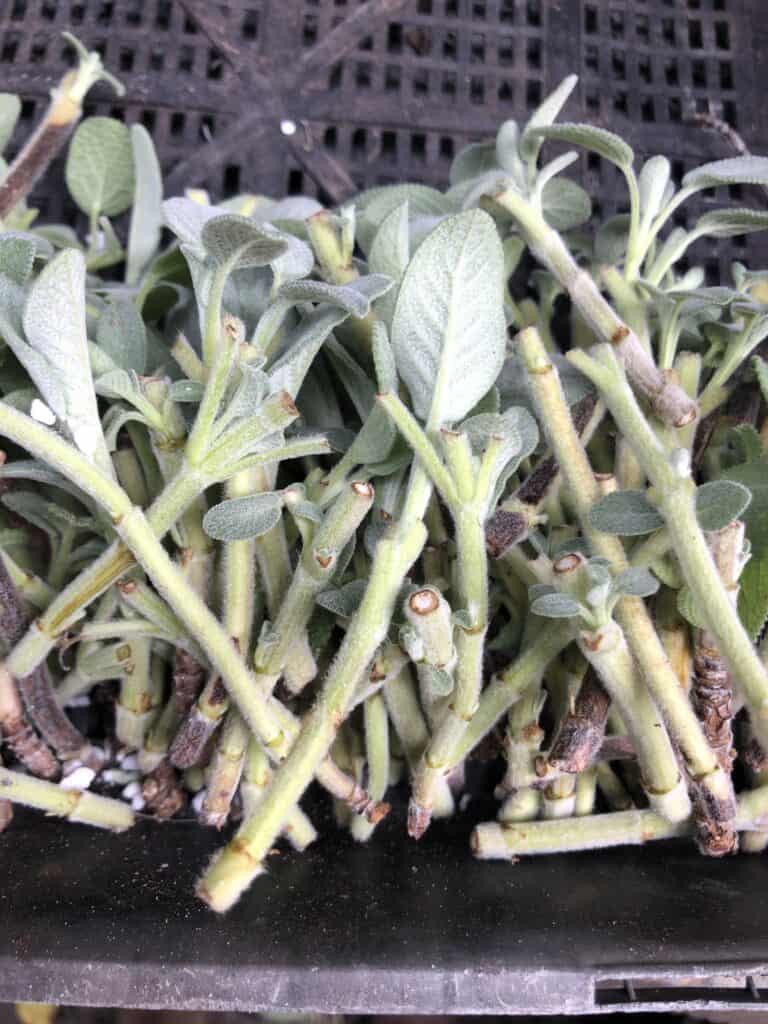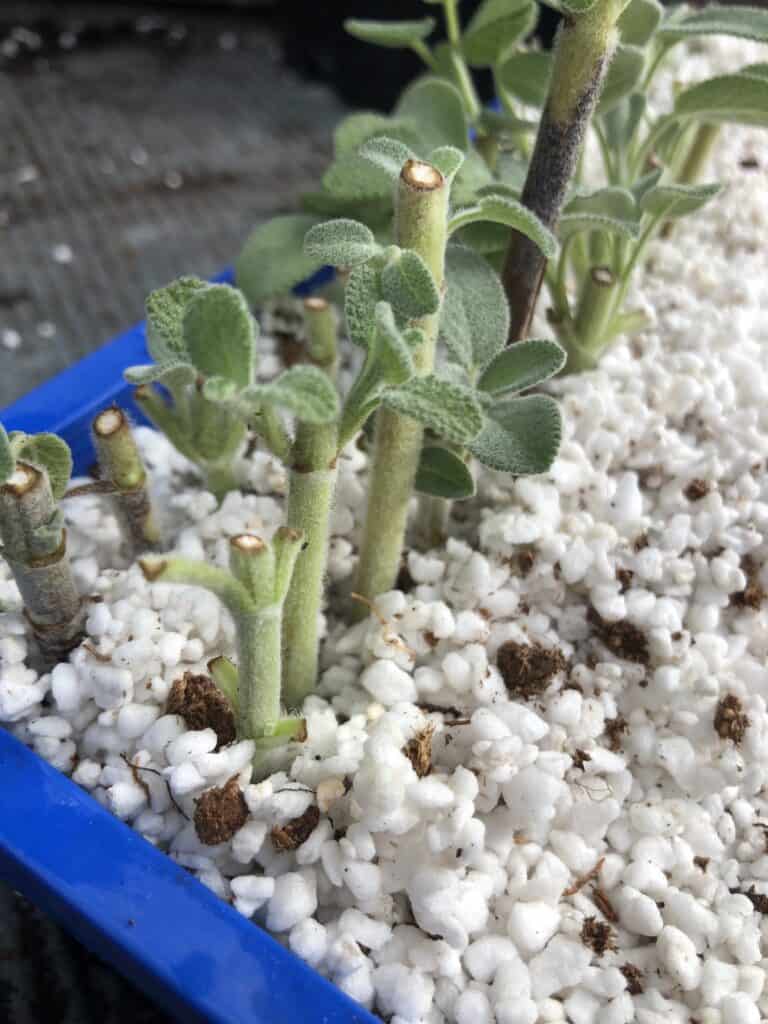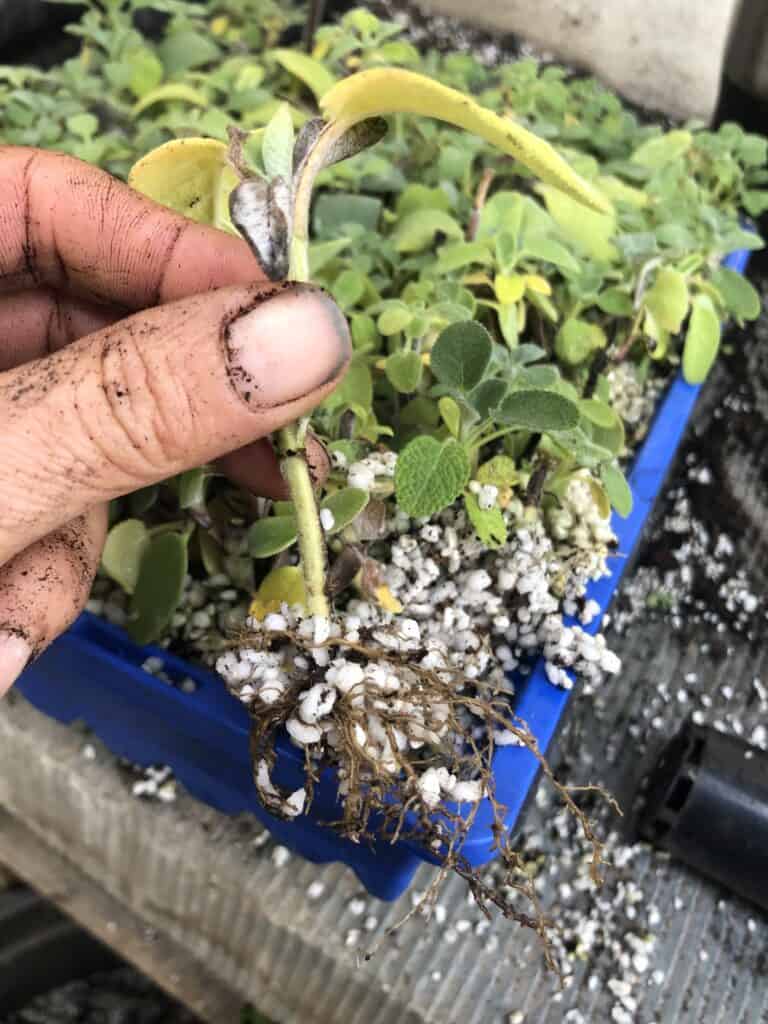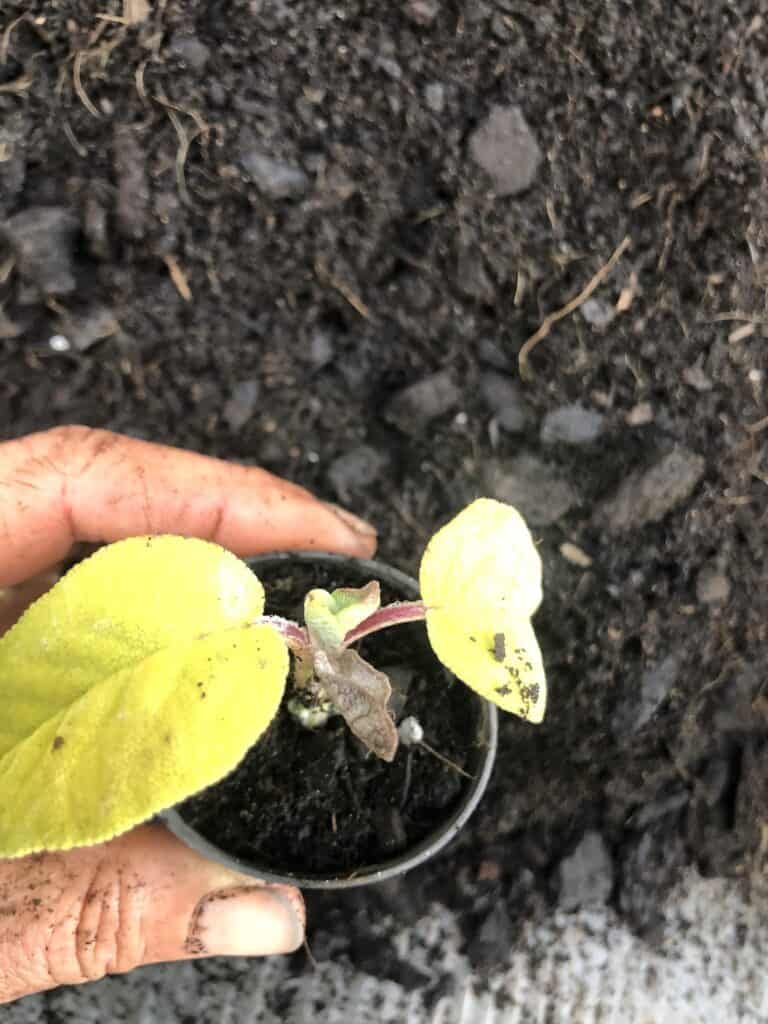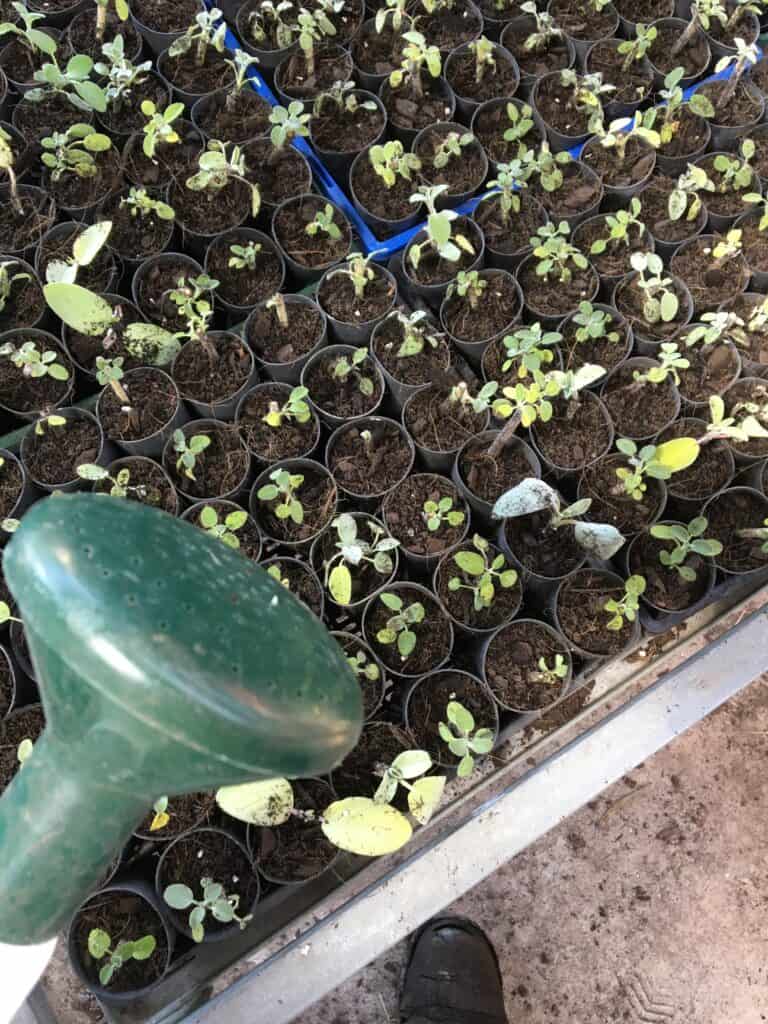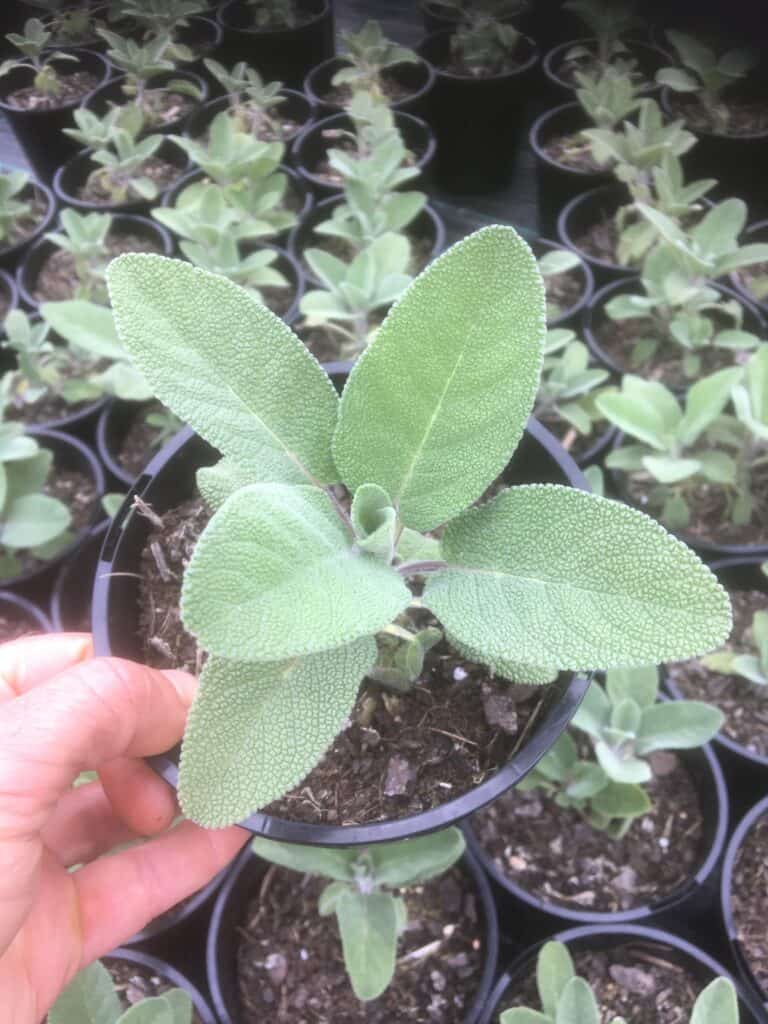Propagation of sage is pretty easy. In this guide we propagated common sage (salvia officianalis).
But it will work on all types of salvia from the many different types of sage, into the ornamental salvias that are grown for their wonderful colours.
Best time of year to take sage or salvia cuttings.
We have found that the best time of year to take the cuttings is in summer.
This has provided us with the fastest results and best strike rates. We have taken the cuttings throughout the year, with varying degrees of success.
Salvias really don’t like their foliage being wet for extended periods of time. It can lead to fungus growth on the leaves and stem.
Its for this reason that we like summer.
The cuttings can be watered once in the morning and the foliage quickly drys off.
How we strike salvia or sage cuttings
This is how we strike the roots in our wholesale plant nursery.
Some people like to use water to strike the roots but because we are producing so many at a time we much prefer to use a mix of perlite and peat moss.
First you want to select nice healthy stems to use for the cuttings.
Nice heathy green growth works best.
The brown older wood can sometimes work but its more hit and miss.
So we create the cutting by cutting just below a bottom leaf node and just above a top leaf node.
This picture shows it better than i can explain.
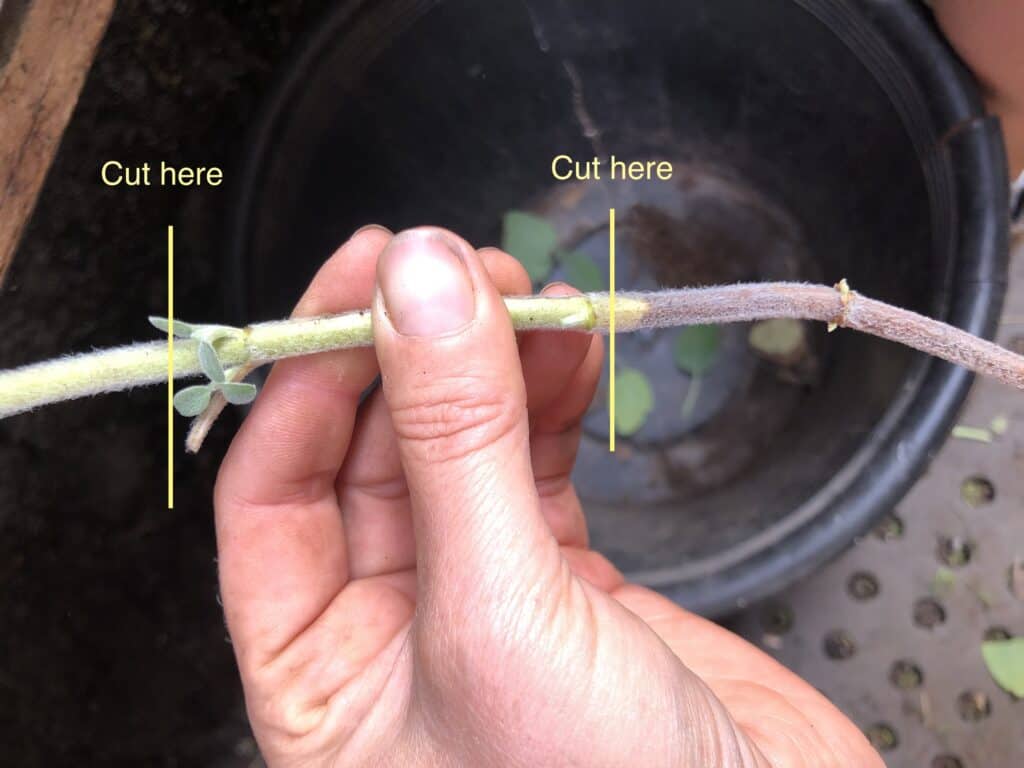
If you want a larger cutting you can skip a leaf node or two.
This is what we commonly do with ornamental salvias that have very closely packed leaf nodes.
The lower leaves are striped away leaving just the top leaves. If the leaves are bigger than what is shown here you can trim them in half.
This reduces the amount of stress on the cutting.
If there is too much foliage the stem will focus on trying to keep the foliage alive, we want it to focus on sprouting roots.
So once you have your cuttings, they can be plugged into the perlite and peat moss.
We mix 10% peat moss with 90% perlite. This is the same mix we use on almost everything we take cuttings of.
Once the cutting are in the mix , we give them a good thorough watering.
The cuttings then need to be kept somewhere warm, protected from direct sunlight and wind.
We water them daily in the morning.
As i mentioned at the top of the article this allows the foliage to remain dry the majority of the time.
How long do sage/ salvia cuttings take to root?
We usually get root growth in 4 weeks but its not uncommon for it to take 8 or even 12 weeks.
Because there are so many types of salvias the rates can vary a bit.
Ornamental salvias we find strike roots really fast.
These sage cuttings took about 8 weeks till they had enough root for us to pot into soil.
When you pot them use a good quality potting mix. Well draining is very important for almost all salvias.
Some salvias such as bog sage actually like their feet wet. Hence the name.
Once you get those roots into some soil the growth will explode.
In one month you’ll see plenty of new growth.
During that month keep them sheltered from direct sunlight and protected from wind.
Keep watering once in the mornings.
After a month they should be ready for planting out in the garden or in our case ready to sell.
Hopefully you found this helpful if you did, you might like to sign up for our newsletter and check out some of our other propagation articles.
We have over 50 articles showing some of the plants we propagate in our nursery. You can find them all on our propagation page.
Thanks for reading happy planting.

